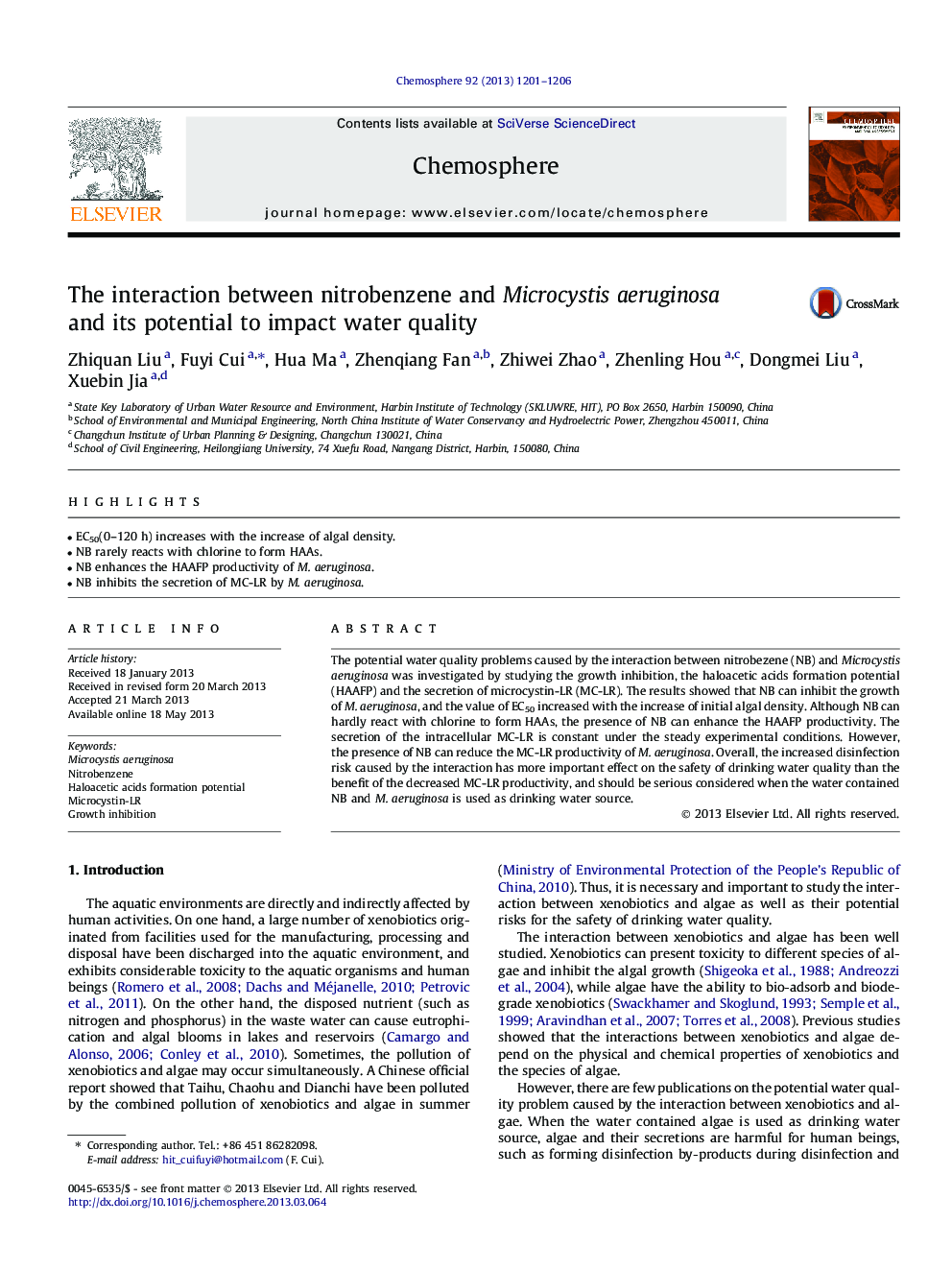| Article ID | Journal | Published Year | Pages | File Type |
|---|---|---|---|---|
| 6310632 | Chemosphere | 2013 | 6 Pages |
Abstract
The potential water quality problems caused by the interaction between nitrobezene (NB) and Microcystis aeruginosa was investigated by studying the growth inhibition, the haloacetic acids formation potential (HAAFP) and the secretion of microcystin-LR (MC-LR). The results showed that NB can inhibit the growth of M. aeruginosa, and the value of EC50 increased with the increase of initial algal density. Although NB can hardly react with chlorine to form HAAs, the presence of NB can enhance the HAAFP productivity. The secretion of the intracellular MC-LR is constant under the steady experimental conditions. However, the presence of NB can reduce the MC-LR productivity of M. aeruginosa. Overall, the increased disinfection risk caused by the interaction has more important effect on the safety of drinking water quality than the benefit of the decreased MC-LR productivity, and should be serious considered when the water contained NB and M. aeruginosa is used as drinking water source.
Related Topics
Life Sciences
Environmental Science
Environmental Chemistry
Authors
Zhiquan Liu, Fuyi Cui, Hua Ma, Zhenqiang Fan, Zhiwei Zhao, Zhenling Hou, Dongmei Liu, Xuebin Jia,
